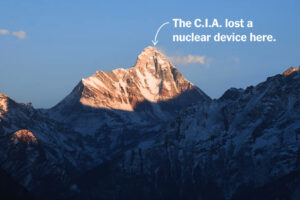Baseline or paused “reciprocal” rate
MapSize by 2024 imports
Since returning to office, President Trump has waged a global trade war without parallel in modern history. With steep and sometimes punishing tariffs on America’s friends and foes alike, the president has sought to reset the world trading order, raise new federal revenue and pressure private businesses to make more of their products in the United States.
But Mr. Trump’s campaign is only beginning — and whether he will succeed remains an open question with great consequence for the U.S. economy.
On Aug. 1, the president is set to impose another round of taxes on imports from many countries, including Canada and Mexico, with rates up to 50 percent. Those are on top of the tariffs that the White House has already announced on other nations or negotiated through recent deals, as well as specific products, including foreign cars.
Mr. Trump’s actions threaten to revive a style of trade brinkmanship that has previously rattled markets, and it will likely result in price increases on American consumers and businesses. Here’s where the tariffs stand.
Many countries are set to see higher tariffs beginning Aug. 1. Some have learned in recent weeks about the new duties that will soon be applied to their goods in the United States. Others will be subject to taxes that the president announced and suspended earlier this year. And still more nations have brokered agreements with the United States that lower the rates they might have faced otherwise.
In the first camp are roughly two dozen countries that have received letters spelling out the higher tariff rates that will apply to their goods beginning next month unless they can strike a last-minute trade truce with the White House.
Taxes on imports from South Korea would rise to 25 percent, and the duties on Thailand’s goods would be set at 36 percent. The highest, so far, would be Brazil, which would see tariffs hit 50 percent next month.
Mr. Trump announced that tariff in a searing letter that attacked Brazilian leaders for their treatment of former President Jair Bolsonaro, an ally of Mr. Trump who is facing charges for inciting a coup.
In each of his letters, Mr. Trump said he would ratchet up the taxes on imports even higher if countries retaliated against the United States. He also said that the duties are separate from those he has applied to specific sectors.
When Mr. Trump unveiled many of his initial tariffs in April, he described the staggering rates as “reciprocal.” He derived the duties from a formula – widely questioned by experts – relative to the size of the U.S. trade deficit with each nation.
Soon after announcing the tariffs, Mr. Trump halted them for 90 days, in a pause that was set to expire in early July. But Mr. Trump extended the pause again this month as part of his renewed push to strike trade deals before Aug. 1. (For China, the date is Aug. 12, under a deal it brokered with U.S. officials.)
It is unclear if the president plans to reimpose these exact tariffs or modify them in some way. For the moment, though, his executive order would see his “reciprocal” rates implemented next month for countries that haven’t been told otherwise.
Issuing his initial pause, Mr. Trump sought to broker 90 deals in 90 days, as one of his advisers described it. That never materialized, though the president has struck a series of trade agreements with a handful of nations, including those in the European Union, which announced a preliminary agreement with the United States on Sunday.
That deal would set tariffs on E.U. goods at 15 percent, in exchange for better market access for U.S. goods and other concessions. The Trump administration has not released detailed terms of the arrangement.
Last week, the president announced a deal with Japan that calls for a 15 percent tariff on that country’s exports to the United States while relaxing duties that had applied to the Japanese auto industry. Japan agreed to supply $550 billion for investment in the United States.
The White House has previously announced similar framework agreements with Britain, Vietnam, the Philippines and Indonesia. The Indonesia deal, which Mr. Trump also announced last week, set its tariff rate at 19 percent. For several countries, the deals impose higher duties on goods that use a significant portion of parts or raw materials from countries including China and Russia.
54%
”Reciprocal“
tariff
104%
Rate increases as China punches back
30%
Negotiated truce rate
Feb. 1
March 4
April 2
May 12
The United States has set a 30 percent baseline tariff on imports from China under an agreement in May that walked back, at least for now, a highly damaging tit-for-tat escalation of duties between the two superpowers. (Other tariffs may also apply to Chinese goods.)
The deadline for the current rate to expire is Aug. 12, though American officials have said they may push the date as talks continue. Mr. Trump has said that tariffs could rise again without a new deal. But he signaled that it would be less than the 145 percent rate the U.S. government had imposed at one point in April, as the two sides escalated trade penalties on each other.
China has long been a target for Mr. Trump dating back to his first term. Upon returning to office, he initially sought to penalize Beijing for failing to stem the flow of fentanyl into the United States.
Two of America’s largest trading partners may also see tariffs rise on some of their exports to the United States beginning Aug. 1. For Canada, that new rate would be 35 percent; for Mexico, 30 percent.
White House officials say the rates would apply to imports from the two countries that are not covered under a trade deal that Mr. Trump signed during his first term. But the president’s aides have cautioned that a decision on the matter is not final.
Share of imports entering under U.S.M.C.A. trade deal
Mr. Trump first targeted Canada and Mexico in February, announcing a 25 percent import tax on all arriving goods, which the president justified by saying the two nations had not sufficiently helped to combat the flow of fentanyl. Facing blowback domestically and abroad, he later paused and modified that arrangement to exempt items that are covered under the U.S.-Mexico-Canada Agreement, or U.S.M.C.A.
These broad tariffs are separate from duties that Mr. Trump has imposed on specific imports and industries, including foreign cars and auto parts. Those tariffs also affect Canada and Mexico, with some key exceptions for products covered by U.S.M.C.A.
Some countries have not been targeted with specific new tariff threats. Instead, they are subject to a flat, 10 percent tariff on all imports into the United States, under an order Mr. Trump signed earlier this year.
Active Steel
50
About 20 percent of steel is imported.
Active Aluminum
50
Half of aluminum imports come from Canada.
Active Autos and auto parts
25
Nearly half of all vehicles sold in the United States are imported.
In process Copper
—
Chile and Canada are major sources of copper imports.
In process Lumber
—
The United States is the largest buyer of Canadian lumber.
In process Semiconductors
—
A number of Asian countries are major sources.
In process Pharmaceuticals
—
China and India are major suppliers of generic medications.
In process Trucks
—
Mexico and Canada account for 80 percent of imports.
In process Critical Minerals
—
China controls the world market for rare-earth minerals.
In process Aircraft
—
The aerospace industry relies on specialized global suppliers.
In process Polysilicon
—
A key ingredient in semiconductors and solar panels.
In process Unmanned Aircraft
—
The majority of commercial drones are made in China.
Several of Mr. Trump’s tariffs target specific products or industries, using a provision of federal law – Section 232 – meant to help the president address trade issues that present national security threats.
Since the start of his second term, Mr. Trump has announced these duties on imports of aluminum, foreign cars and car parts and steel. In some cases, these tariffs supplement the duties targeted at specific countries, and the taxes do not pile on top of each other. For others, like the European Union, agreements brokered with the United States would override the sector-specific duties.
The president has started the process to impose additional sector-specific tariffs on products including copper, pharmaceuticals and semiconductors.
Combined, the tariffs Mr. Trump has imposed this year mean the vast majority of goods that enter the United States now are subject to higher import taxes. Those duties are paid by the companies that import the goods, raising the risk that U.S. businesses and consumers will soon see higher prices. Mr. Trump insists otherwise, arguing that foreign producers will essentially eat the costs.
Mr. Trump also has shown no signs of slowing down with what has been an on-again-off-again trade war.
The president and his top aides repeatedly have said they do not plan to extend their upcoming Aug. 1 deadline. But Mr. Trump has announced, then relaxed, some of his toughest trade policies in a bid to buy more time to negotiate deals.
Here’s how the rates break down:
Germany Preliminary deal reached—2010—2015Japan Preliminary deal reached—2410—2515Vietnam Preliminary deal reached—4610——20Ireland Preliminary deal reached—2010—2015Italy Preliminary deal reached—2010—2015Britain Preliminary deal reached———10—10France Preliminary deal reached—2010—2015Netherlands Preliminary deal reached—2010—2015Indonesia Preliminary deal reached—3210—3219Belgium Preliminary deal reached—2010—2015Spain Preliminary deal reached—2010—2015Sweden Preliminary deal reached—2010—2015Austria Preliminary deal reached—2010—2015Philippines Preliminary deal reached—1710—1719Poland Preliminary deal reached—2010—2015Hungary Preliminary deal reached—2010—2015Denmark Preliminary deal reached—2010—2015Slovakia Preliminary deal reached—2010—2015Finland Preliminary deal reached—2010—2015Czechia Preliminary deal reached—2010—2015Portugal Preliminary deal reached—2010—2015Slovenia Preliminary deal reached—2010—2015Romania Preliminary deal reached—2010—2015Greece Preliminary deal reached—2010—2015Lithuania Preliminary deal reached—2010—2015Bulgaria Preliminary deal reached—2010—2015Estonia Preliminary deal reached—2010—2015Croatia Preliminary deal reached—2010—2015Luxembourg Preliminary deal reached—2010—2015Latvia Preliminary deal reached—2010—2015Malta Preliminary deal reached—2010—2015Cyprus Preliminary deal reached—2010—2015Mexico Renewed tariff threat25———30—Canada Renewed tariff threat25———35—South Korea Renewed tariff threat—2510—25—Thailand Renewed tariff threat—3610—36—Malaysia Renewed tariff threat—2410—25—Brazil Renewed tariff threat———1050—South Africa Renewed tariff threat—3010—30—Cambodia Renewed tariff threat—4910—36—Bangladesh Renewed tariff threat—3710—35—Iraq Renewed tariff threat—3910—30—Sri Lanka Renewed tariff threat—4410—30—Algeria Renewed tariff threat—3010—30—Kazakhstan Renewed tariff threat—2710—25—Libya Renewed tariff threat—3110—30—Tunisia Renewed tariff threat—2810—25—Serbia Renewed tariff threat—3710—35—Laos Renewed tariff threat—4810—40—Myanmar Renewed tariff threat—4410—40—Brunei Renewed tariff threat—2410—25—Bosnia and Herzegovina Renewed tariff threat—3510—30—Moldova Renewed tariff threat—3110—25—China Reciprocal tariff paused2012510———Taiwan Reciprocal tariff paused—3210———India Reciprocal tariff paused—2610———Switzerland Reciprocal tariff paused—3110———Israel Reciprocal tariff paused—1710———Norway Reciprocal tariff paused—1510———Venezuela Reciprocal tariff paused—1510———Nigeria Reciprocal tariff paused—1410———Guyana Reciprocal tariff paused—3810———Pakistan Reciprocal tariff paused—2910———Nicaragua Reciprocal tariff paused—1810———Jordan Reciprocal tariff paused—2010———Angola Reciprocal tariff paused—3210———Cote d’Ivoire Reciprocal tariff paused—2110———Madagascar Reciprocal tariff paused—4710———Botswana Reciprocal tariff paused—3710———Dem. Rep. Congo Reciprocal tariff paused—1110———Namibia Reciprocal tariff paused—2110———Fiji Reciprocal tariff paused—3210———Cameroon Reciprocal tariff paused—1110———Liechtenstein Reciprocal tariff paused—3710———Lesotho Reciprocal tariff paused—5010———Mauritius Reciprocal tariff paused—4010———Mozambique Reciprocal tariff paused—1610———North Macedonia Reciprocal tariff paused—3310———Zambia Reciprocal tariff paused—1710———Equatorial Guinea Reciprocal tariff paused—1310———Chad Reciprocal tariff paused—1310———Zimbabwe Reciprocal tariff paused—1810———Malawi Reciprocal tariff paused—1710———Vanuatu Reciprocal tariff paused—2210———Syria Reciprocal tariff paused—4110———Nauru Reciprocal tariff paused—3010———Singapore Baseline tariff———10——Colombia Baseline tariff———10——Australia Baseline tariff———10——Turkey Baseline tariff———10——Chile Baseline tariff———10——Saudi Arabia Baseline tariff———10——Costa Rica Baseline tariff———10——Peru Baseline tariff———10——Ecuador Baseline tariff———10——United Arab Emirates Baseline tariff———10——Dominican Republic Baseline tariff———10——Argentina Baseline tariff———10——New Zealand Baseline tariff———10——Honduras Baseline tariff———10——Guatemala Baseline tariff———10——Trinidad and Tobago Baseline tariff———10——Russia Baseline tariff———10——Egypt Baseline tariff———10——El Salvador Baseline tariff———10——Morocco Baseline tariff———10——Qatar Baseline tariff———10——Bahamas Baseline tariff———10——Kuwait Baseline tariff———10——Oman Baseline tariff———10——Uruguay Baseline tariff———10——Bahrain Baseline tariff———10——Ghana Baseline tariff———10——Ukraine Baseline tariff———10——Iceland Baseline tariff———10——Kenya Baseline tariff———10——Haiti Baseline tariff———10——Panama Baseline tariff———10——Bolivia Baseline tariff———10——Ethiopia Baseline tariff———10——Jamaica Baseline tariff———10——Paraguay Baseline tariff———10——Lebanon Baseline tariff———10——Senegal Baseline tariff———10——Tanzania Baseline tariff———10——Gabon Baseline tariff———10——Georgia Baseline tariff———10——Azerbaijan Baseline tariff———10——Uganda Baseline tariff———10——Albania Baseline tariff———10——Armenia Baseline tariff———10——Nepal Baseline tariff———10——Suriname Baseline tariff———10——Togo Baseline tariff———10——Belize Baseline tariff———10——Papua New Guinea Baseline tariff———10——Liberia Baseline tariff———10——Benin Baseline tariff———10——Barbados Baseline tariff———10——Monaco Baseline tariff———10——Uzbekistan Baseline tariff———10——Djibouti Baseline tariff———10——Kosovo Baseline tariff———10——Rwanda Baseline tariff———10——Sierra Leone Baseline tariff———10——Maldives Baseline tariff———10——Mongolia Baseline tariff———10——San Marino Baseline tariff———10——Antigua and Barbuda Baseline tariff———10——Eswatini Baseline tariff———10——Afghanistan Baseline tariff———10——Belarus Baseline tariff———10——Marshall Islands Baseline tariff———10——Saint Kitts and Nevis Baseline tariff———10——Kyrgyzstan Baseline tariff———10——Montenegro Baseline tariff———10——Turkmenistan Baseline tariff———10——Grenada Baseline tariff———10——Sudan Baseline tariff———10——Yemen Baseline tariff———10——Niger Baseline tariff———10——Saint Vincent and the Grenadines Baseline tariff———10——Saint Lucia Baseline tariff———10——Iran Baseline tariff———10——Guinea Baseline tariff———10——Timor-Leste Baseline tariff———10——Samoa Baseline tariff———10——Mali Baseline tariff———10——Cuba Baseline tariff———10——Tajikistan Baseline tariff———10——Burkina Faso Baseline tariff———10——Cape Verde Baseline tariff———10——Burundi Baseline tariff———10——Andorra Baseline tariff———10——Bhutan Baseline tariff———10——Mauritania Baseline tariff———10——Tonga Baseline tariff———10——Somalia Baseline tariff———10——Micronesia Baseline tariff———10——Palau Baseline tariff———10——Dominica Baseline tariff———10——Gambia Baseline tariff———10——Comoros Baseline tariff———10——Central African Republic Baseline tariff———10——Solomon Islands Baseline tariff———10——Eritrea Baseline tariff———10——South Sudan Baseline tariff———10——Kiribati Baseline tariff———10——Sao Tome and Principe Baseline tariff———10——Tuvalu Baseline tariff———10——Guinea-Bissau Baseline tariff———10——North Korea Baseline tariff———10——Republic of the Congo Baseline tariff———10—— Show 183 more rows +





